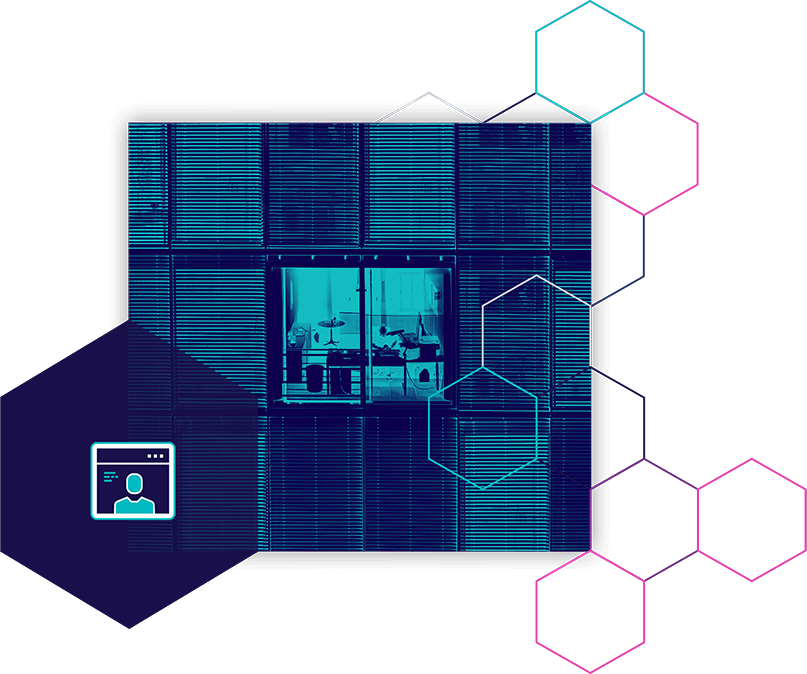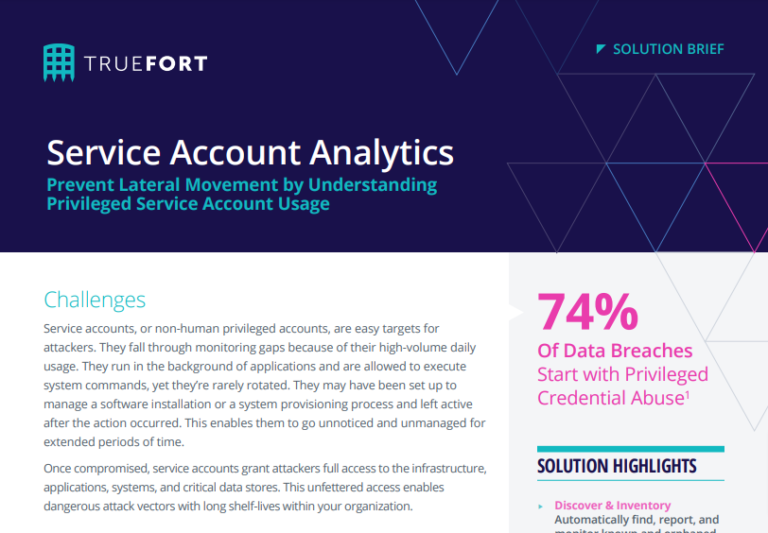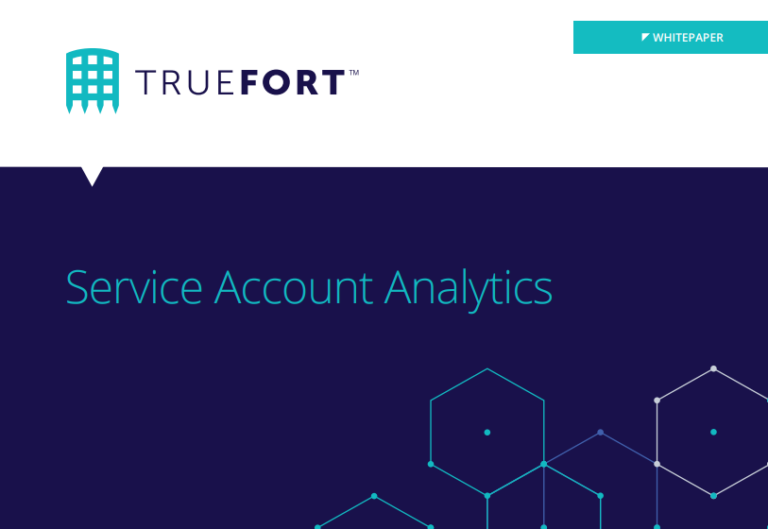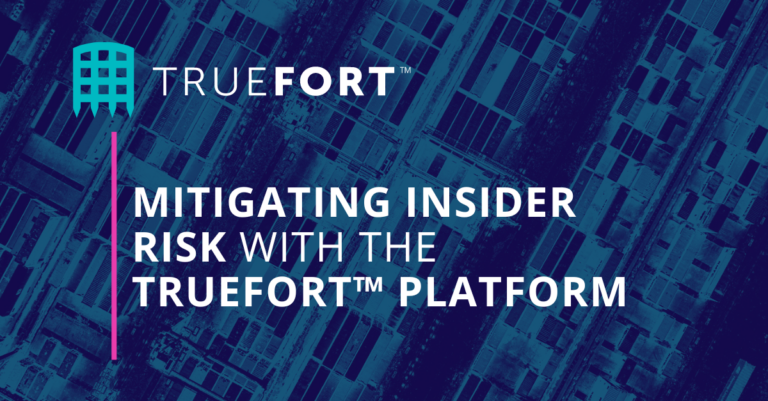TRUEFORT SOLUTION
Manage Insider Risks with a Leading Microsegmentation Solution
Attackers have excelled at tricking employees into allowing access to an organization via phishing, smishing, and other social engineering tricks. Once in, they look like legitimate users and search for a forgotten service account – giving them unrestricted access to move freely within the environment. TrueFort detects, monitors, and learns trusted connection patterns of users, applications, and service accounts.
Untracked service accounts are an attacker’s skeleton key
- Forgotten accounts are vulnerabilities – Old and orphaned accounts hide throughout servers and applications, their use going undetected.
- Automation expands service account usage – As these privileged accounts are needed and used at high volume, finding erratic behavior is difficult.
- UEBA solutions only understand user accounts – End users and automated machines behave in dramatically different ways when accessing key assets.
- PAM and IAM solutions lack behavior – Identity management solutions lack context on where, when, and how service accounts are being used and what they are authorized to do.

Preventing insider threats requires deep analysis and control of use
Enforce a zero-trust security model
Profile applications and service accounts to better understand what good, acceptable behaviors is, and never inherently trust anything
Empower real-time visibility
Map any applications, interactions, and users to create real-time detection and response of suspicious behavior to immediately kill unwanted actions when they stray from normal approved actions
Monitor file integrity
Automatically detect file changes and any drift resulting from malware, encrypted data, or attackers trying to cover their tracks as they operate through File Integrity Monitoring
Validate account relationships
Easily identify rotating and retiring service accounts before they are abused outside of where hardcoded or locally cached credentials exist. Understanding the interactions between applications and workloads means security teams can prevent downtime and compromise
Automate least privilege access
Enhance the identification, monitoring, and management of application service accounts to prevent business risks
FAQ
Insider risk management refers to the proactive approach taken by organizations to identify, assess, and mitigate the potential risks posed by insiders, including employees, contractors, or trusted partners.
It involves implementing a comprehensive framework and set of practices to prevent, detect, and respond to insider threats that may arise from intentional or unintentional actions. Insider risk management encompasses measures such as background checks, access controls, user behavior monitoring, data loss prevention, and ongoing employee training and awareness programs. By implementing effective insider risk management strategies, organizations can mitigate the potential damage caused by insider threats, protect sensitive data, and maintain a secure operating environment.
An insider threat, in the context of cybersecurity, refers to the risk posed to an organization’s digital assets, systems, and data by individuals within the organization itself.
It involves employees, contractors, or trusted partners who have authorized access to sensitive resources but may exploit their privileges maliciously or inadvertently. Insider threats can take various forms, including intentional data theft, sabotage, unauthorized disclosure, or unintentional actions leading to security breaches.
These threats can be motivated by personal gain, disgruntlement, espionage, or even human error. Mitigating insider threats requires a combination of security controls, such as access controls, user monitoring, data loss prevention, and ongoing employee education to raise awareness and foster a culture of security within the organization.
Insider threat indicators are behavioral or situational patterns that may suggest the presence of an insider threat within an organization. These indicators help identify individuals who may pose a risk to the organization’s security. Common insider threat indicators include:
- Unusual Data Access: Abrupt or unauthorized access to sensitive or confidential data beyond the employee’s job responsibilities.
- Changes in Behavior: Observable shifts in behavior, such as increased secrecy, disgruntlement, or sudden financial difficulties, may correlate with a potential insider threat.
- Violation of Security Policies: Consistent disregard for established security policies and procedures, including sharing passwords, circumventing access controls, or accessing restricted areas.
- Excessive Network Activity: Unusual or unauthorized network activity, such as large data transfers, frequent login attempts, or attempts to bypass security measures.
- Data Irregularities: Unexpected alterations or deletions of critical files or databases that indicate unauthorized actions.
Detecting and analyzing these insider threat indicators can assist organizations in proactively identifying and mitigating potential threats, safeguarding their sensitive data and systems.
Mitigating insider threats requires a multi-faceted approach to enhance security and minimize risks. Here are key strategies to consider:
- Comprehensive Security Policies: Develop and enforce strong security policies that encompass access controls, data handling, and acceptable use of resources.
- Role-Based Access: Implement a principle of least privilege, granting employees access to only the resources necessary for their roles, minimizing the potential for misuse.
- Employee Education: Conduct regular cybersecurity training sessions to raise awareness about insider threats, proper data handling, and the consequences of malicious actions.
- Monitoring and Auditing: Deploy robust monitoring tools to detect suspicious activities, track data access, and identify anomalies that may indicate insider threats.
- Incident Response Plan: Develop an incident response plan specific to insider threats, outlining steps to be taken in the event of an incident and ensuring a swift and effective response.
- Continuous Evaluation: Conduct periodic reviews and assessments of employee access privileges, perform background checks, and monitor behavior to identify any potential red flags.
By implementing these measures, organizations can mitigate the risks posed by insider threats, enhancing their overall cybersecurity posture and protecting their sensitive data and systems for the future.
Resources













